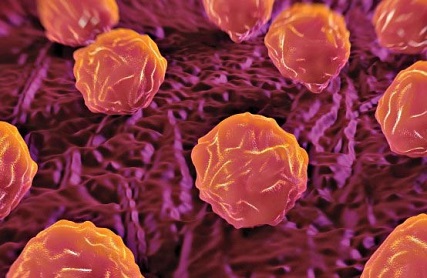Nikhil Prasad Fact checked by:Thailand Medical News Team Jul 18, 2024 9 months, 1 week, 1 day, 12 hours, 42 minutes ago
Medical News: Researchers from the Fondazione IRCCS Policlinico San Matteo in Pavia, Italy, have made groundbreaking discoveries about the role of certain cells in patients with primary myelofibrosis (PMF). This
Medical News report delves into their findings and explores what this could mean for the future of cancer treatment.
 New hope for Myelofibrosis patients
What is Primary Myelofibrosis?
New hope for Myelofibrosis patients
What is Primary Myelofibrosis?
Primary myelofibrosis (PMF) is a type of cancer that affects the bone marrow, leading to severe scarring, anemia, and enlargement of the spleen. It is a chronic condition that disrupts the normal production of blood cells, causing a variety of serious health problems.
The Key Players: Myeloid-Derived Suppressor Cells
The researchers focused on a particular group of cells known as myeloid-derived suppressor cells (MDSCs). These cells are typically involved in regulating immune responses and are known to expand in various cancers, sepsis, and chronic inflammation. In PMF, MDSCs seem to play a crucial role.
Study Overview
The study included 41 PMF patients and 21 healthy individuals for comparison. The researchers aimed to understand the presence and behavior of MDSCs in PMF patients, investigating their correlation with disease progression and potential as a therapeutic target.
Major Findings
-Increased MDSCs in PMF Patients
The study found a significant increase in the number of polymorphonuclear myeloid-derived suppressor cells (PMN-MDSCs) in both the blood and spleen of PMF patients compared to healthy individuals. This increase was strongly correlated with disease progression, suggesting that PMN-MDSCs could be an indicator of disease severity.
-Reduced CXCR4 Expression
PMN-MDSCs in PMF patients showed reduced expression of the CXCR4 receptor, along with increased levels of the protein SDF-1α in the plasma. This combination appears to facilitate the movement of these cells from the bone marrow to other parts of the body, contributing to the disease's progression.
-Correlation with Genetic Mutations
Patients with mutations in the JAK2 and CALR genes, which are common in PMF, had higher levels of PMN-MDSCs. The study also found a direct correlation between the severity of these genetic mutations and the number of suppressor cells.
-Impact on Bone Marrow Fibrosis
The extent of bone marrow fibrosis, a hallmark of PMF, was linked to the number of circulating PMN-MDSCs. Patients with more advanced fibrosis had higher levels of these cells, indicating that they may play a role in worsening the disease.
Understanding the Role of MDSCs
Myeloid-derived suppressor cells are known to suppress the immune system and promote the growth of new blood vessels, which can help tumors grow and spread. I
n PMF, these cells seem to contribute to both the chronic inflammation and the extensive scarring seen in the bone marrow and spleen.
Implications for Treatment
This study suggests that targeting PMN-MDSCs could be a new strategy for treating PMF. By reducing the number of these cells or blocking their movement, it might be possible to slow the progression of the disease and improve patient outcomes.
Conclusion
The findings from this study, published in the peer-reviewed journal: Cancers, provide new insights into the role of PMN-MDSCs in PMF and highlight their potential as a target for future therapies.
https://www.mdpi.com/2072-6694/16/14/2556
For the latest news on medical research and breakthroughs, keep on logging to Thailand
Medical News.
Read Also:
https://www.thailandmedical.news/news/promising-antioxidant-anticancer-compounds
https://www.thailandmedical.news/news/herbs-and-phytochemicals-new-hope-in-cancer-treatment-found-in-phytochemical-from-a-plant-in-malaysia
